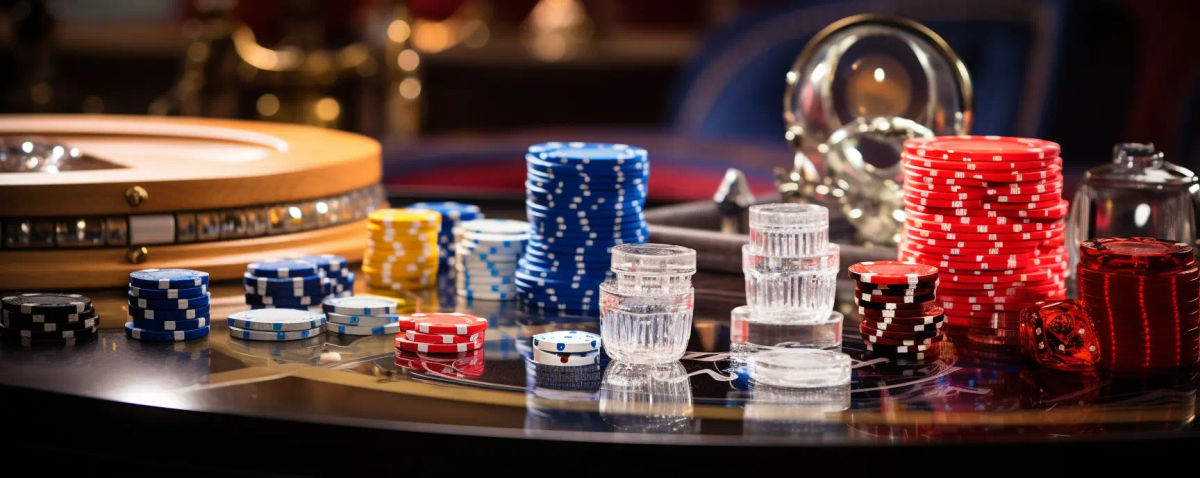Baccarat: A Game of Streaks and Stops
Baccarat is a staple in casinos all over the world and one of the most popular table games. It was popular among France’s elite during the 19th century, but the game's origins are not fully known. Some say that baccarat caught on in France as early as the late 1400s when French soldiers returned home after the Franco-Italian War.
One possible reason for baccarat’s sudden surge in popularity in the late 19th century was the infamous royal baccarat scandal, also referred to as the Tranby Croft affair. It was a cheating scandal that involved a man by the name of Sir William Gordon-Cumming, who was playing baccarat with several British nobles, including the Prince of Wales. Gordon-Cumming got caught cheating, and his underhanded deeds made the headlines. In covering the affair, newspapers also published the rules of baccarat.
It is one of the most popular casino games, regardless of when and where baccarat was conceived. While some of the rules might be a little difficult to grasp at first, people are attracted to it because it’s one of the most player-friendly casino games regarding the house edge.
The game moves along at a fast pace too. A player faces off against a dealer. The player and the dealer are issued two cards each, and a third card is sometimes also dealt depending on circumstances which we will soon explain.
How to Play Baccarat - The Basics
Learning the basics of baccarat starts with correctly pronouncing the game's name. Despite its spelling, it’s not “back-a-rat”. Instead, it’s pronounced “bah-cah-ra”. One of the biggest misconceptions about baccarat is that it is a game for the toffee-nosed elites of society. This couldn’t be further from the truth. Sure, the game has been and continues to be a favorite amongst the upper class, but regular working-class folks like to play it too. You’ll find baccarat in swanky casinos, dingy basements that may or may not smell like cat pee, and everywhere in between.
You’ll see three betting areas in front of you when you sit at a baccarat table. One area has “Player” written in it, another says, “Banker”, and the third says “Tie”. Your only decision in baccarat is which of these to bet on. If you bet on the player, you are wagering that the player will win the hand. A banker bet means you are betting on the banker, while a tie speaks for itself.

Assessing Hands
Once the bets are placed, the dealer and the players get two cards each face-up. The cards are given point values. An ace is worth one point, twos through nines are worth their face values, and 10s through kings are worth nothing. The object of the game is to have the total point value of a hand equal to nine or as close to it as possible. So, if you are dealt an 8 and a king, you would have 8 points. If you had a KQ, you’d have zero points.
But what if your cards are something like a 7 and an 8? Well, with a double-digit hand total, you use the number on the right. In this case, the hand equals 15, so you would go with the 5 as your point total. A hand totaling 17 would be counted as a 7. A hand totaling 11 would count as one and so on.
One term you must become familiar with is “Natural”. A natural occurs when a hand has a point value of eight or nine. For example, the player’s hand is a 7 -2 or an 8 – K. Those are natural and, assuming the dealer doesn’t have one too, it’s an automatic winner.
Payouts, Probabilities, and the House Edge
Let’s examine how a hand can play out. First, you place your bet on Player, Banker, or Tie. In this scenario, you place $1 on the player. You are dealt a J- 7 and the dealer has an A – 5. The player hand is worth 7 points which beats the dealer’s 6 points. So how much do you win? Here are the payout rates.
- A winning bet on a player hand pays back 1 to 1.
- A winning bet on a banker’s hand pays back 0.95 to 1.
- A winning bet on a tie pays back 8 to 1.
So, your $1 winning bet on the player’s hand would net you a total return of $2. If you made a $1 winning bet on the banker’s hand, you would get a return of $1.95. A successful $1 wager on a tie would net you a total return of $9. The odds are mildly skewed in favor of the banker because the banker has a slightly better chance of winning. Here are the probabilities.
- The banker wins roughly 45.86% of the time.
- The player wins around 44.62% of the time.
- The tie occurs about 9.5% of the time.
Along with knowing the probabilities, you should also know what the house edge is for each bet.
- The house edge for a banker bet is 1.06%
- The house edge for a player bet is 1.24%
- The house edge for a tie is 14.4%
One thing that you should take away from these house edges is the whooping 14.4% house edge for a tie bet. The other thing you can glean from this is the ultra-low house edge for player and banker bets. What does this all mean? It means you should only bet on the player or the banker. You should completely ignore the tie bet. Pretend it doesn’t exist. As far as you’re concerned, there are only two betting options. Of course, that’s assuming you want to give yourself the best chance of winning money.
Baccarat Rules
When you play Blackjack, you can choose whether to hit or stand. Baccarat doesn’t afford you that option. Instead, the cards in your hand dictate whether you get a third card. We’ll begin with the player’s hand. If the player’s hand totals 6, 7, 8, or 9, the player stands. If the player’s hand total is 0, 1, 2, 3, 4, or 5, the player must draw a third and final card. That should be pretty straightforward. It gets a little more complicated when we examine the dealer.
| Rules for the Dealer Drawing a Third Card | ||
| Point Total of First Two Dealer Cards | Draws When Player’s Third Card is: | Stands When Player’s Third Card is: |
| 0, 1, 2 | Always Draws | Always Draws |
| 3 | 1, 2, 3, 4, 5, 6, 7, 9, 0 | 8 |
| 4 | 2, 3, 4, 5, 6, 7 | 1, 8, 9, 0 |
| 5 | 4, 5, 6, 7 | 1, 2, 3, 8, 9, 0 |
| 6 | 6, 7 | 1, 2, 3, 4, 5, 8, 9, 0 |
| 7 | Always Stands | Always Stands |
| 8 or 9 | Natural Always Stands | Natural Always Stands |
Let’s look at a few different situations to clarify this. The player receives K – 4 and the dealer has a Q – 5. According to the rules, the player must draw if they have 4 points. The player’s third card is a 7 giving the hand a final value of 1 point. As it stands, the dealer is holding a winning hand. However, according to the chart above, the dealer must draw a third card because his hand total is currently 5 and the player’s third card was a 7. The dealer picks up a 5 giving his hand a value of zero which makes the lowly 1-point player hand a winner.
For the next hand, you get a 5 -4 and the dealer gets a 6 – 2. You have a natural 9 and the dealer has a natural 8. Player hand wins. The exact opposite occurs next round. You receive a 6 – 2 and the dealer gets a 5 – 4. You both have to stand because both hands are natural. However, the dealer’s 9 points beats the player’s 8 points.
In our third example, the player gets a pair of threes for a total of 6 points. The dealer has an AK giving him 1 point. What happens now? Well, the player must stand with the 6 points while the dealer must draw on is 1 point. The dealer’s third card is an 8 giving him 9 points and the win.
As you can see, neither the player nor the dealer are given options. If the rules say draw, then the player or dealer must draw. If the rules say stand, then they must stand. This trait makes baccarat one of the purest forms of gambling. The only decision a player has power over is whether to bet on the player or the banker. We’ve already forgotten about ties.
Baccarat Strategy
Because the only decision you will make is where to place your bet, this is the only time you can implement any strategy. You could flip a coin, blindly bet on the player's hand because of the 1 to 1 payout, or keep hitting the banker bet because it wins more often. One basic strategy many experienced baccarat players employ is following and anticipating streaks. They record the results of previous hands and look for emerging trends.
Of course, just because something happened in the past doesn’t mean it will keep repeating, especially in baccarat which is totally random. For example, the last six hands may have resulted in alternating wins with the last hand being won by the player. This would prompt some to jump on the banker bet. Similarly, a bet on the banker might be warranted if the banker hand has won a couple in a row. It’s a lot like how some roulette players follow odd/even numbers and black/red trends.
Martingale System on Baccarat
Another strategy that some gutsier players use is the Martingale system. For those unfamiliar with the concept, it’s basically doubling your bet amount after a loss. So, if you bet $1 on the player and it loses, you would bet $2 on the player’s next hand. If that loses, you would bet $4 on the player’s hand. The theory is that you will eventually win and recoup your losses. But does this always work? Let’s take a look at a player chart and a dealer chart to find out.
| Using the Martingale System to Bet on Player’s Hand in Baccarat | ||
| Bet Amount | Result | Total Money Won/Lost |
| $1 | Loss | $1 |
| $2 | Loss | $3 |
| $4 | Loss | $7 |
| $8 | Loss | $15 |
| $16 | Win | + $1 |
Now for a look at using the Martingale system while betting on the banker’s hand.
| Using the Martingale System to Bet on Banker’s Hand in Baccarat | ||
| Bet Amount | Result | Total Money Won/Lost |
| $1 | Loss | $1 |
| $2 | Loss | $3 |
| $4 | Loss | $7 |
| $8 | Loss | $15 |
| $16 | Win | +0.20 |
You need to remember that a winning bet on the banker hand is paid out at a rate .95 to 1. Thus, the winning $16 bet on the banker pays $15.20 on top of the original $16 bet amount. You made up for your losses and came out twenty cents ahead.
There is a huge problem with using the Martingale system. Table limits. In the above examples, if the table limit was set at $10, you wouldn’t have been able to place that last $16 bet. The most you could have wagered would have been $10 which isn’t enough to recover the losses.
Another system that some players use is quite the opposite of the Martingale system. Call it the Anti Martingale. Instead of doubling your bet after a loss, you double your bet after a win. One of the most obvious benefits of this system is you won’t compound your losses during cold streaks. In either case, using the Martingale or Anti Martingale system doesn’t have any effect on the house edge.
Putting Our Knowledge to Practical Use

Let’s put everything together and run through a few hands. You take your seat and see on the scoreboard that the banker’s hand just won after losing two in a row. You also see that the banker’s hand has prevailed in 15 of the previous 20 hands. You must now make your only decision. Do you ride the trend or buck it?
Seeing that you feel lucky, you decide to buck the trend by betting on yourself, the player. The dealer serves you up an A -3 and he gives himself J – 8. Take a few seconds to figure out what happens next. Will there be any draws? If there are, who gets them? The correct answer is the hand is over. The dealer has a natural thus ending the round.
After placing another player bet, you look down to find a K – 10 while the dealer’s holding K -6. Again, take a few seconds to figure out what happens next. If you guessed that the player receives one more card, you’d be correct. That card happens to be an 8 giving you 8 points. So, your hand has played out. You’re sitting with 8 points and the dealer has 6 points. What now? Does the dealer draw? As strange as it may seem, the dealer cannot draw another card. The hand is over and the player hand wins. Despite being down in the point count, the dealer couldn’t draw because his two-card hand total was 6 and the third player card was an 8.
For the last hand, you once again back the player hand and receive a 2 -4 while the dealer shows an A – 6. You get to draw a card right? After all, you’re behind in the hand. Wrong. This hand is over. Remember, the player must stand with 6, 7, 8, or 9 points while the banker must always stand on 7.
Play Baccarat Free Online
Even if you haven’t fully absorbed everything here, it should all come together quickly after you’ve played a few hands. There’s no better place to start than at one of the many sites that offer free online baccarat. Instead of risking real money, you can learn the ropes using play money. You can get the feel for the flow of the game, get a grasp on drawing situations, and try out some of the strategies listed above. Free online baccarat games are also useful in developing your own approach. You can make all the mistakes you want to and it won’t cost you a penny.
Conclusion
Despite being somewhat mechanical, baccarat is a lot of fun and it’s certainly fast-paced. With the exception of sitting at the baccarat table and placing your bet, you have no control or input regarding the outcome of the game. There are no other decisions to make, no bluffing, and there’s no point in counting cards seeing how most baccarat tables use multiple decks. The cards always dictate the next move.
As much as we have gone over some basic strategies, the reality is that they don’t really improve your odds like a solid strategy does in blackjack and casino poker games. You probably won’t find a specific baccarat strategy that is universally agreed on. The only thing that most players agree on is that betting on the tie is a sucker bet.
Visit a site that has free baccarat and get yourself some experience. That way, you can start playing for real money with confidence when you are ready. You’ll soon discover that there are many versions of the game. We have covered the most commonly played variant which is called Punto Banco, which translates into Player and Banker. Chemin de Fer and Baccarat Banque are also popular versions. In these variants, players take turns acting as the banker. You’ll also find other variants such as Macao, mini-baccarat, and midi-baccarat.
FAQ
Are there any bonus bets offered in baccarat?
You may come across some optional side bets depending on the game you’re playing. Some of these include 3 Card Win, 3 Giving 8, the 4-5-6 bet, and All Red/Black. The optional Big and Small side bet is featured in Playtech’s version. A Small side bet wins if the combined total of player and banker cards is four. If five or six cards are showing, the Big side bet wins.
Do all online casinos have baccarat?
Not all online casinos have baccarat, but the overwhelming majority of them do. Baccarat is also offered at most land-based casinos.
What system gives me the best chance of making a profit over the long run?
The truth is that no baccarat system guarantees a profit. In fact, many experts will tell you that baccarat systems are utterly useless. You can win during any session, but the math says that you’ll lose money in the long run. That’s one constant with any casino game. Perhaps the best approach for inexperienced novices is to simply bet on the Banker. And remember to stay away from betting on ties!


